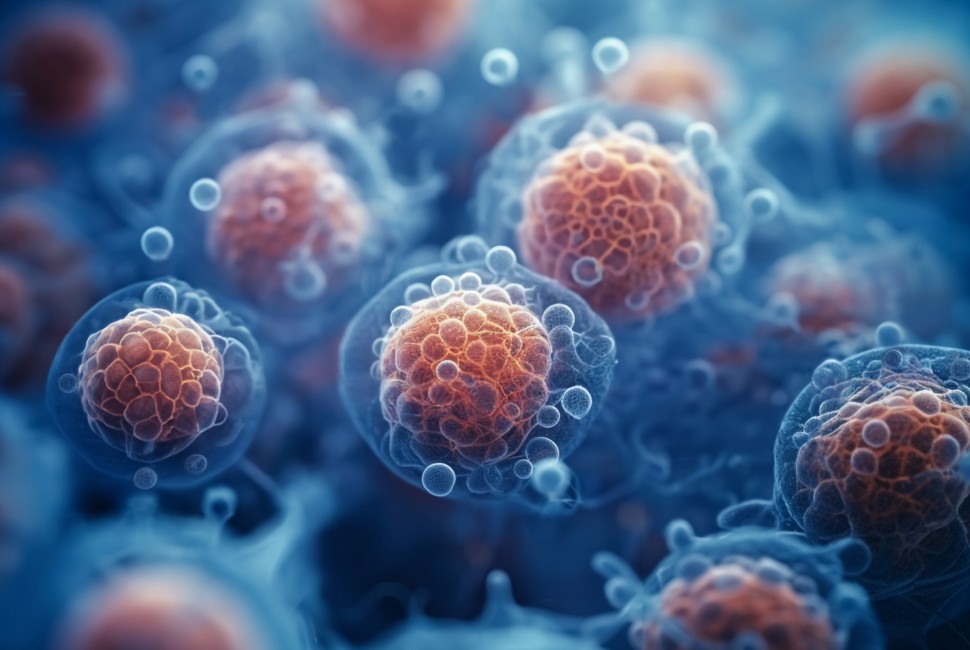Each cell in the body has its own unique delivery system that scientists are working on harnessing to move revolutionary biological drugs — molecules like proteins, RNA and combinations of the two — to specific diseased parts of the body.
A new study from Northwestern University hijacked the transit system and sent tiny, virus-sized containers to effectively deliver an engineered protein to its target cell and trigger a change in the cell’s gene expression. The success came from encouraging engineered proteins to move toward a specific cell membrane structure that the researchers found increased a protein’s likelihood of latching onto the container.
Published in July in the journal Nature Communications, the paper contends the novel technique could be generalizable, paving the road for the goal of targeted biological drug delivery.
The researchers
The research combines work from two labs in Northwestern’s Center for Synthetic Biology: those of biomedical engineer Neha Kamat and chemical and biological engineer Josh Leonard. The Kamat lab has largely focused on the design of synthetic containers and uses biophysical principles to control molecules targeting other cells. Leonard’s lab develops tools to build these natural delivery containers, termed extracellular vesicles (EVs).
Justin Peruzzi and Taylor Gunnels co-led the study as doctoral students in Kamat’s lab. Gunnels’ work in the lab is ongoing, and Peruzzi, who completed his Ph.D., works as a scientist at a protein-based medicine company.
The approach
“We were interested in applying some of the biophysical insights that have emerged about how to localize proteins to specific membrane structures so that we could hijack this natural system,” said Kamat, the paper’s co-corresponding author and associate professor at the McCormick School of Engineering. “In this study, we discover general ways to load drug cargo into these vesicles very efficiently while preserving their function.”
The keys to this “cargo loading” approach are sites on cell membranes called lipid rafts. These regions are more structured than the rest of the membrane and reliably contain specific proteins and lipids.
Because EV membranes contain the same lipids found in lipid rafts, the researchers hypothesized that proteins engineered to associate with lipid rafts could be loaded into the EVs, allowing them to be delivered to other cells.
Using protein databases and lab experiments, the team determined their lipid raft-association method enabled up to a stunning 240 times more protein to be loaded into vesicles.
In a practical application of the method, the team engineered cells to produce a protein called a transcription factor. They loaded it into EVs and then delivered it to a cell to alter the recipient cell’s gene expression — without compromising the protein’s function upon delivery.
The key challenge
Kamat and Leonard said the main challenge in loading therapeutic cargo into EVs is that the producer cell and the recipient cell are often at odds with each other. In the cell producing the EV, for example, you might engineer therapeutic cargo to associate tightly to a membrane to increase the chance it moves into a soon-to-be released EV. However, this same behavior is often undesirable in a recipient cell because cargo may need to release from the EV membrane and move to the cell’s nucleus to perform its biological function.
The answer was the creation of cargo with reversible functions.
“Tools that enable reversible membrane association could be really powerful when building EV-based medicines,” said Gunnels. “Although we’re not yet sure of the precise mechanism, we see evidence of this reversibility with our approach. We were able to show that by modulating lipid-protein interactions, we could load and functionally deliver our model therapeutic cargo.”
Why it matters
The study brings researchers a step closer to addressing a major bottleneck for biological medicine development, determining how to ensure fragile molecules travel through the body to reach the diseased cells in a patient without impacting healthy cells.
The researchers said they’re eager to try the approach with medicinal cargo for disease applications in immunotherapy and regenerative medicine.
“If we can load functional biomedicines into EVs that are engineered to only deliver those biomolecules to diseased cells, we can open the door to treating all sorts of diseases,” said Leonard, the co-corresponding author and a McCormick professor.


